Tooth Gel 100g for Dogs: Complete Guide to Canine Dental Care, Dosage & Safety
Oral hygiene in dogs is often overlooked, yet it plays a pivotal role in maintaining overall health. Just like humans, dogs can suffer from plaque, tartar, gingivitis, bad breath, and even periodontal disease. Tooth Gel 100g for dogs is a specialized veterinary dental product designed to provide targeted oral care for canines. With a unique enzymatic formulation, it offers mechanical and biochemical protection against oral pathogens, reduces plaque formation, and improves breath odor — all without needing rinsing.
This in-depth guide covers everything you need to know about Tooth Gel 100g for dogs — from its key indications and benefits to dosage recommendations and professional veterinary usage.
What is Tooth Gel 100g for Dogs?
Tooth Gel 100g is an enzymatic dental hygiene gel formulated specifically for dogs. It typically contains active ingredients such as glucose oxidase, lactoperoxidase, chlorhexidine, zinc salts, or fluoride — depending on the brand and formulation. Some variants are flavored to make the application more acceptable to pets.
The product is packaged in a 100-gram tube and intended for daily use to control dental plaque, prevent calculus buildup, and support healthy gums.
Key Indications
Tooth Gel 100g for dogs is indicated for the following oral conditions:
| Condition | Description | Tooth Gel Role |
| Tartar (calculus) | Hardened plaque that adheres to enamel and gum lines | Helps prevent tartar development with regular use |
| Gingivitis | Gum inflammation due to bacterial infection | Reduces inflammation and bacterial load |
| Periodontal disease (Stage I-II) | Infection and inflammation of gum tissues and supporting bones | Supports disease management when used adjunctively |
| Post-dental procedure maintenance | After dental cleanings or extractions | Maintains oral hygiene and prevents recurrence |
| Puppy dental development | From 6 weeks onward during teething | Conditions gums and establishes early oral hygiene |
Mechanism of Action
The active ingredients in Tooth Gel work through a variety of mechanisms:
- Enzymes (e.g., glucose oxidase, lactoperoxidase): Break down bacterial walls and inhibit microbial colonization.
- Chlorhexidine: An antiseptic that binds to oral tissues, offering long-lasting antibacterial action.
- Fluoride (if included): Strengthens enamel and prevents demineralization.
- Sorbitol/Xylitol-free (dog-safe): Many products exclude harmful ingredients and instead use pet-safe carriers.
Benefits of Using Tooth Gel 100g for Dogs
| Benefit | Explanation |
| Non-rinse formula | No need to brush or rinse – ideal for dogs who resist brushing |
| Improves gum health | Reduces inflammation, bleeding, and gingival recession |
| Freshens breath | Acts on odor-causing bacteria and byproducts |
| Safe for long-term use | Veterinarian-approved for chronic dental care |
| Supports systemic health | Good dental hygiene reduces the risk of systemic infections (e.g., endocarditis) |
Dosage and Administration of Tooth Gel 100g for Dogs
Administering Tooth Gel 100g correctly is essential for achieving optimal dental hygiene and preventing periodontal disease in dogs. The gel is designed for daily use and is safe for ingestion, making it an ideal solution even for pets that resist traditional brushing.
This section provides detailed dosage recommendations based on your dog’s weight, along with best practices for application.
Dosage Guidelines Based on Dog Weight
The following table outlines the recommended amount of gel to be used per application:
| Dog Weight | Recommended Gel Quantity | Application Frequency | Method of Application |
| 1 – 5 kg | Pea-sized amount (approx. 0.5 g) | Once daily | Finger or cotton swab on gums |
| 6 – 15 kg | 1 cm ribbon (approx. 1 g) | Once daily | Soft pet toothbrush or finger |
| 16 – 30 kg | 2 cm ribbon (approx. 2 g) | Once daily | Dog toothbrush for gum line |
| 31+ kg | 3 cm ribbon (approx. 3 g) | Once daily | Full brushing on teeth and gums |
For dogs with moderate to severe plaque or bad breath, veterinarians may recommend twice-daily application for the first 7–10 days as an intensive care phase.
Administration Instructions
Follow these step-by-step instructions to safely and effectively apply Tooth Gel:
1. Prepare the Gel and Tools
- Ensure your hands are clean.
- Have treats on hand for positive reinforcement.
2. Apply the Gel
- Dispense the recommended amount of gel.
- Apply it directly to the outer surface of the teeth and along the gum line.
- For uncooperative dogs, applying just on the gum line allows the tongue and saliva to distribute the gel naturally.
3. No Rinsing Required
- Tooth Gel 100g is formulated to be safe for ingestion.
- Do not rinse the mouth or offer food for 10–15 minutes after application.
4. Reward the Dog
- Make dental care a positive daily experience.
Best Practices for Tooth Gel Administration
| Tip | Why It Helps |
| Start young | Easier to build tolerance in puppies |
| Be consistent | Daily application maximizes efficacy |
| Choose a flavor your dog likes | Enhances cooperation |
| Use gentle pressure | Prevents gum irritation |
| Monitor your dog’s mouth | Watch for redness, swelling, or bleeding |
| Combine with dental treats or chews | Adds mechanical cleaning support |
Special Cases and Adjustments
| Scenario | Modified Instructions |
| Post-surgery or extractions | Wait until the area heals or apply under veterinary advice |
| Elderly dogs with tooth loss | Focus on massaging gel on gums rather than brushing |
| Dogs with behavioral resistance | Start by applying with a cotton swab or fingertip; increase duration gradually |
How Long Will a 100g Tube Last?
Here’s an estimate based on daily use:
| Dog Size | Daily Usage | Estimated Tube Duration |
| Small (1–5 kg) | 0.5 g/day | ~200 days |
| Medium (6–15 kg) | 1 g/day | ~100 days |
| Large (16–30 kg) | 2 g/day | ~50 days |
| Extra-Large (31+ kg) | 3 g/day | ~33 days |
These estimates may vary slightly depending on application habits and product consistency.
Veterinarian’s Note on Administration
“Daily application of a dental gel, especially one with enzymatic action, can reduce bacterial biofilm and lower the risk of gingivitis and halitosis significantly. Consistency, gentle technique, and positive reinforcement are the keys to long-term oral health in dogs.”
— Dr. Neha S. Sharma, B.V.Sc. & A.H.
Tooth Gel 100g for Dogs: Cautionary Advice and Handling Instructions
Tooth Gel 100g is formulated to be gentle and effective for canine dental use, but like any veterinary product, proper use and awareness of precautions are vital for ensuring your dog’s safety and maximizing benefits. Below is a comprehensive overview of the safety profile, potential risks, and important precautions when using this oral care product.
1. General Safety Overview
Tooth gels designed for veterinary use are typically non-toxic, enzymatic, and xylitol-free, making them safe to swallow in the quantities applied during normal use. However, careful adherence to the instructions is essential to avoid irritation, allergies, or misuse.
2. Key Safety Guidelines
| Safety Point | Details |
| Pet-safe formulation | Only use tooth gels labeled specifically for dogs. Human toothpaste often contains fluoride, xylitol, or abrasives that are toxic to pets. |
| Do not rinse | Veterinary tooth gels are formulated to be swallowed and do not require rinsing. |
| Avoid overuse | Use only the recommended amount; over-application may cause mild digestive upset (nausea, soft stool). |
| Keep out of reach of children | Store away from children and other pets to prevent ingestion of large quantities. |
| Check expiration date | Using expired gels may reduce efficacy or introduce risk of contamination. |
3. When to Consult Your Veterinarian
Before starting dental gel, seek veterinary guidance in the following cases:
- Your dog has pre-existing gum disease or oral ulcers
- There is visible tartar or bleeding gums
- The dog is pregnant, lactating, or has chronic illness
- You notice bad breath despite regular gel use (may indicate deeper dental disease)
4. Potential Side Effects
Although rare, some dogs may develop minor side effects or allergic reactions to the ingredients.
| Symptom | Possible Cause | What to Do |
| Drooling | Taste intolerance or irritation | Observe; usually self-resolving |
| Vomiting or diarrhea | Ingesting too much gel | Stop use and monitor; call vet if persistent |
| Lip or gum swelling | Allergic reaction | Discontinue use; contact vet |
| Excessive licking or pawing at mouth | Discomfort or dislike of flavor | Switch to a different flavor or brand |
5. Special Considerations
| Situation | Precaution |
| Puppies (under 8 weeks) | Avoid use unless advised by a veterinarian |
| Senior dogs (10+ years) | Be cautious if teeth are loose or gums are sensitive |
| Dogs with kidney disease | Avoid fluoride-based gels; consult vet first |
| Multi-pet households | Don’t share applicators or toothbrushes between pets to prevent bacterial cross-contamination |
| During/after dental surgery | Wait for the wound to heal before resuming or starting gel, unless otherwise advised |
Veterinary Advice and Monitoring
Veterinarians recommend Tooth Gel 100g for dogs as part of a comprehensive dental hygiene plan, especially for dogs:
- Over 3 years of age
- With existing plaque or tartar
- With early-stage periodontal disease
- Post dental cleanings or scaling
- Dogs on soft diets prone to tartar buildup
- Toy breeds (more prone to dental issues)
Your veterinarian may advise adjunct therapies such as:
- Annual dental scaling
- Prescription dental diets
- Dental chews or water additives
Scientific Evidence and Clinical Research
Studies support the efficacy of enzymatic tooth gels in reducing plaque and improving oral health in dogs:
- Journal of Veterinary Dentistry (2021): Dogs treated with chlorhexidine-based gels had significantly less gingivitis over 30 days than controls.
- Veterinary Oral Health Council (VOHC): Products with enzymatic action have shown up to 40% reduction in plaque when used daily.
- American Veterinary Dental College (AVDC): Endorses enzymatic gels as part of preventive dental protocols in pets.
Common Brands of Tooth Gel 100g for Dogs
Here are some well-known veterinary brands that manufacture or distribute 100g canine tooth gels:
| Brand | Key Features |
| Virbac C.E.T. Enzymatic Gel | Dual-enzyme formula, poultry-flavored |
| Vet’s Best Enzymatic Gel | Natural aloe and enzymes |
| TropiClean Fresh Breath Gel | Green tea and natural ingredients |
| Beaphar Tooth Gel | With enzymes and fluoride |
| Sentry Petrodex Enzymatic Gel | Non-foaming, poultry-flavored |
Always read product labels to confirm weight-specific and species-specific guidelines.
Conclusion
Tooth Gel 100g for dogs is an indispensable part of preventive veterinary dental care. With consistent use, it helps reduce the risk of periodontal disease, improve oral hygiene, and ensure your dog lives a healthier, happier life. This safe, effective, and easy-to-administer solution bridges the gap between professional dental procedures and everyday care.By understanding the indications, dosage, safety profile, and method of application, pet parents can take proactive steps toward better dental health in their canine companions. As always, consult your veterinarian to tailor dental hygiene routines to your dog’s individual needs.







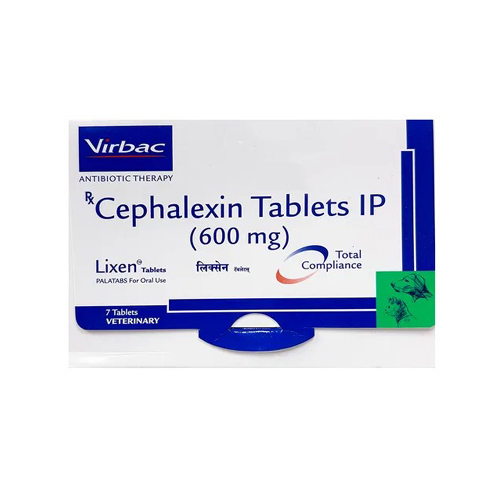
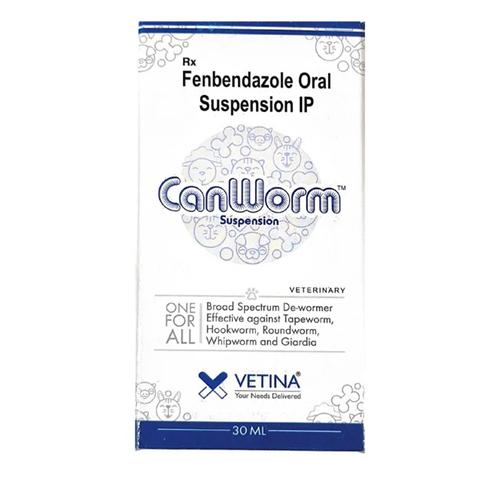


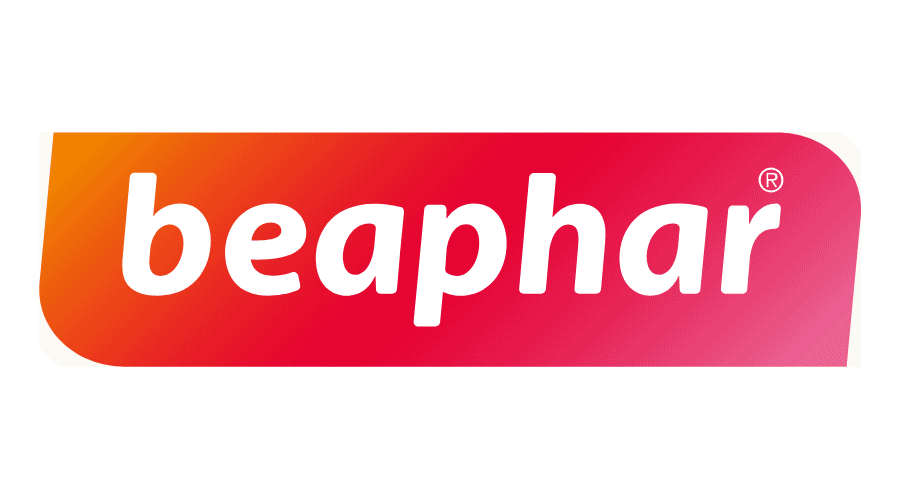
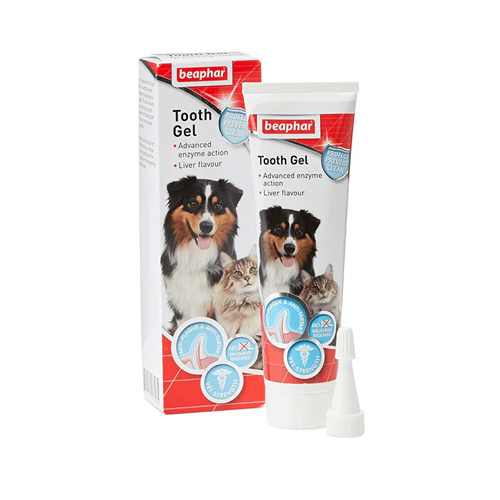
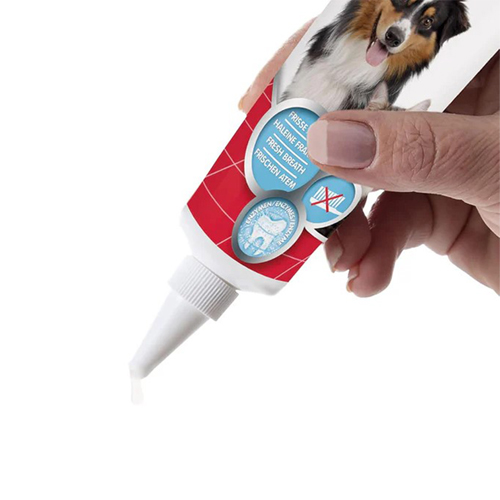
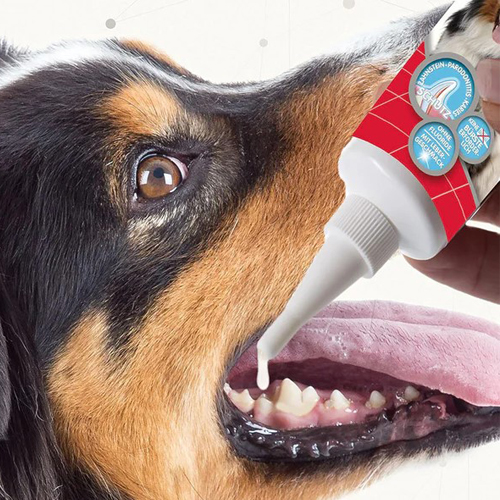
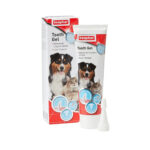
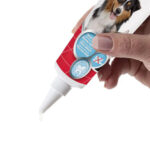
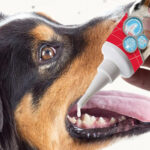
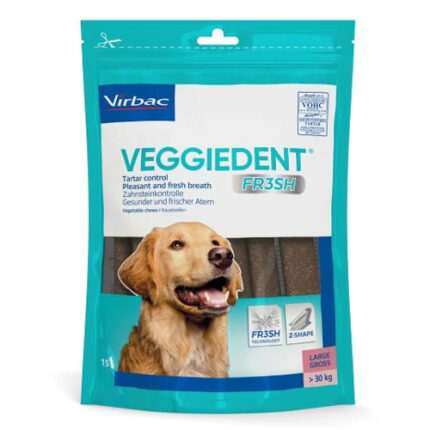
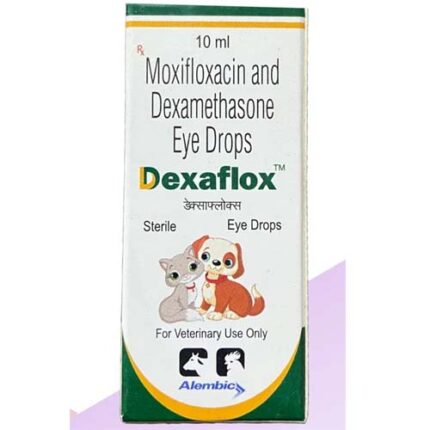
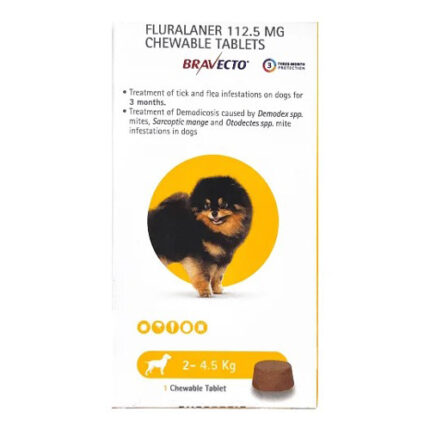
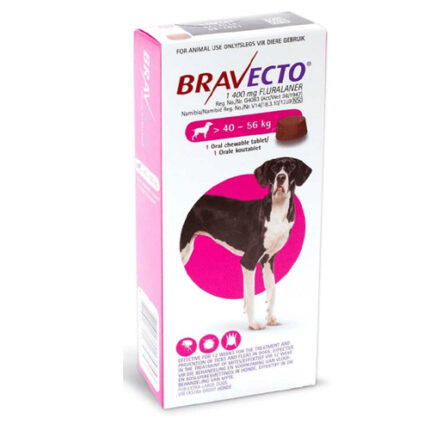

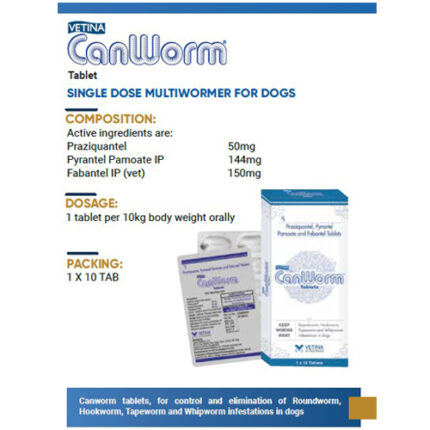
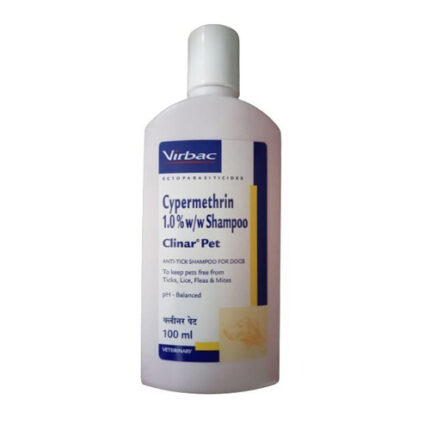
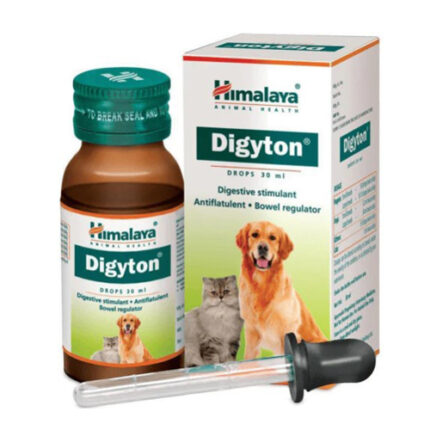
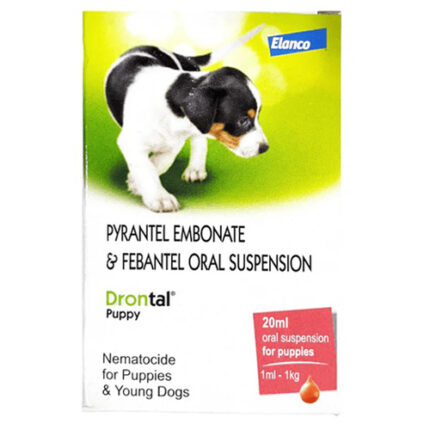
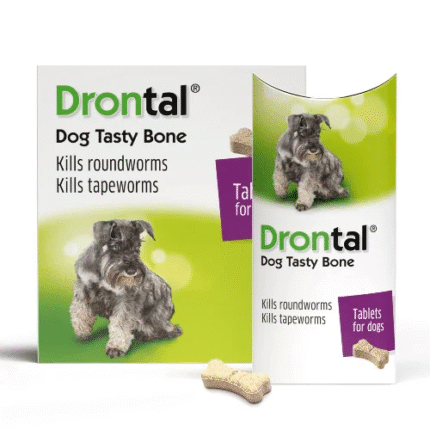

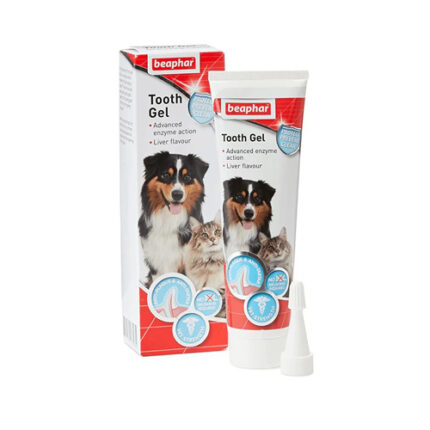
Reviews
There are no reviews yet.